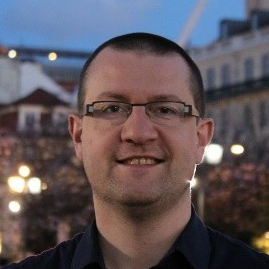Soundscape in Architecture and Urban Planning
A special issue of Applied Sciences (ISSN 2076-3417). This special issue belongs to the section "Acoustics and Vibrations".
Deadline for manuscript submissions: closed (15 November 2020) | Viewed by 33950
Special Issue Editor
Special Issue Information
Dear Colleagues,
Sound is an important aspect of the quality of the urban outdoor environment. Within the field of environmental acoustics, urban soundscape research represents a relatively recent but important paradigm shift, which departs from the point of view that a fitting acoustic environment may have a positive effect on the well-being of inhabitants and visitors. With the advent of new methods and techniques for realistic auralization of outdoor spaces, and with the use of virtual/augmented reality devices becoming more and more widespread, research interest in the challenge of shaping the acoustic environment of urban public spaces has risen considerably.
This Special Issue aims to collect original research papers on the use of the soundscape approach in architecture and urban planning. Both theoretical and application/engineering studies on the acoustic design of urban outdoor space are welcome, and an interdisciplinary approach is encouraged. Topics will cover all aspects of the use of sound in architecture and urban planning, including studies on auralization, urban noise control, urban sound quality, the use of novel acoustic materials in architecture, or the use of virtual or augmented reality in soundscape, environmental acoustics, noise control, and urban acoustic design.
Prof. Bert De Coensel
Guest Editor
Manuscript Submission Information
Manuscripts should be submitted online at www.mdpi.com by registering and logging in to this website. Once you are registered, click here to go to the submission form. Manuscripts can be submitted until the deadline. All submissions that pass pre-check are peer-reviewed. Accepted papers will be published continuously in the journal (as soon as accepted) and will be listed together on the special issue website. Research articles, review articles as well as short communications are invited. For planned papers, a title and short abstract (about 250 words) can be sent to the Editorial Office for assessment.
Submitted manuscripts should not have been published previously, nor be under consideration for publication elsewhere (except conference proceedings papers). All manuscripts are thoroughly refereed through a single-blind peer-review process. A guide for authors and other relevant information for submission of manuscripts is available on the Instructions for Authors page. Applied Sciences is an international peer-reviewed open access semimonthly journal published by MDPI.
Please visit the Instructions for Authors page before submitting a manuscript. The Article Processing Charge (APC) for publication in this open access journal is 2400 CHF (Swiss Francs). Submitted papers should be well formatted and use good English. Authors may use MDPI's English editing service prior to publication or during author revisions.
Keywords
- Soundscape
- Architecture
- Urban planning
- Environmental acoustics
- Noise control
- Urban acoustic design
- Sound quality
- Acoustic materials
- Auralization
- Virtual/augmented reality
Benefits of Publishing in a Special Issue
- Ease of navigation: Grouping papers by topic helps scholars navigate broad scope journals more efficiently.
- Greater discoverability: Special Issues support the reach and impact of scientific research. Articles in Special Issues are more discoverable and cited more frequently.
- Expansion of research network: Special Issues facilitate connections among authors, fostering scientific collaborations.
- External promotion: Articles in Special Issues are often promoted through the journal's social media, increasing their visibility.
- Reprint: MDPI Books provides the opportunity to republish successful Special Issues in book format, both online and in print.
Further information on MDPI's Special Issue policies can be found here.





